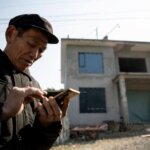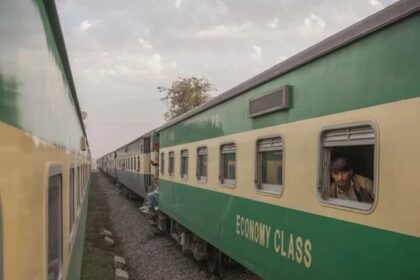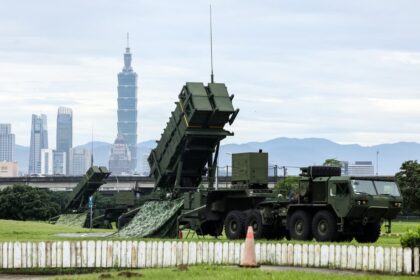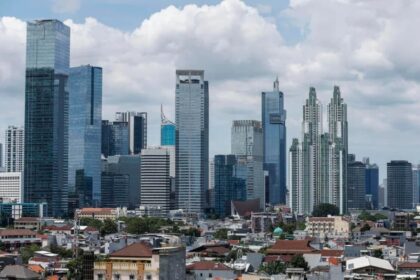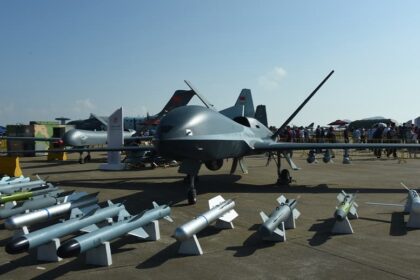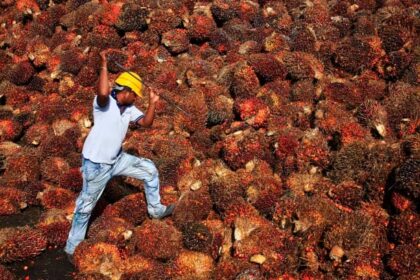Japan and South Korea: Bright Spots in a Challenging Global Art Market
As the global art market faces its most significant downturn in over a decade, Japan and South Korea have emerged as rare centers of resilience and innovation. While the world’s leading art hubs—New York, London, Paris, and Hong Kong—grapple with declining sales and shifting collector habits, the art scenes in Tokyo and Seoul are adapting, evolving, and, in some cases, outperforming global trends. This article explores how these two East Asian nations are navigating the turbulence, the unique features of their markets, and what their experiences reveal about the future of art in Asia and beyond.
How Severe Is the Global Art Market Downturn?
2024 has been a challenging year for the global art market. According to the Art Basel and UBS Global Art Market Report, total sales fell to an estimated $57.5 billion, a 12% year-on-year decrease. The contraction was most pronounced at the top end: the number of artworks selling at auction for over $10 million dropped by 39%. Public auction sales overall declined by 25%, and dealer sales fell by 6%. Economic uncertainty, high interest rates, and geopolitical tensions have made both buyers and sellers more cautious, especially in the ultra-premium segment.
Despite these headwinds, the number of transactions globally actually grew by 3%, reaching 40.5 million. This paradox—lower total value but higher transaction volume—reflects a shift toward more affordable works and a broader base of collectors. The middle and lower tiers of the market are proving more resilient, with smaller dealers even reporting sales growth.
Japan: A Quietly Booming Market
Japan’s art market has long been considered insular and conservative, but recent years have seen a quiet transformation. Between 2019 and 2023, Japan’s art market grew by 11%, reaching an estimated $681 million in 2023—far outpacing the global average growth of just 1% during the same period. This resurgence follows decades of stagnation after the collapse of the 1980s economic bubble, when Japanese collectors were among the world’s most influential.
In 2024, Japan’s fine art auction sales dropped 19% to $149.8 million. While this decline is notable, it is less severe than the global average drop of 27.3%. The number of lots offered at auction was the second highest in a decade, and the sell-through rate hit a ten-year high of 73.9%, indicating robust demand for works that do come to market.
Most transactions in Japan occur at lower price points: 91% of auction lots in 2023 sold for under $10,000, and 93% of dealer transactions were under $50,000. This democratization of the market makes art more accessible to a wider range of buyers and helps explain the market’s stability. The structure is heavily local, with 84% of sales made to Japanese collectors and 74% of gallery sales happening in-person rather than at art fairs or online.
Japan’s art market also supports a significant ecosystem: over 2,060 professional galleries and dealers, 47,320 visual artists, and more than 5,000 museums (1,000 of which specialize in art). The sector directly employs around 12,700 people and supports a $136 million ancillary business in logistics, framing, and related services.
Why Is Japan’s Market So Resilient?
Several factors underpin Japan’s relative strength:
- Local Focus: The market is dominated by domestic sales and long-term relationships between collectors and galleries, insulating it from global shocks.
- Government Reforms: Recent tax changes have made it easier for international galleries to participate in Japanese art fairs, boosting international engagement.
- Economic Stability: Rising wages, modest inflation, and increased consumer spending have contributed to a more confident collector base.
- Affordability: Lower average prices make art more accessible and encourage broader participation.
However, challenges remain. The market is still relatively closed: only 10% of dealer sales come from art fairs (compared to 29% globally), and just 2% from overseas fairs. Online sales are also limited, accounting for only 5% of transactions. There is also a need to promote emerging and female artists, who make up just 20% of gallery turnover.
Who Are the Stars of Japan’s Art Scene?
Japan is home to internationally renowned artists such as Yayoi Kusama, Yoshitomo Nara, and Takashi Murakami. These artists often achieve their highest auction prices abroad, but their popularity helps drive interest in Japanese contemporary art at home. Rising stars like Yu Nishimura are also making waves, with auction totals surging in recent years. The country’s art fairs—Tokyo Gendai, Art Collaboration Kyoto, and Art Week Tokyo—are attracting increasing international attention and helping to showcase new talent.
South Korea: Rapid Growth and New Challenges
South Korea’s art market has experienced explosive growth over the past decade, fueled by government support, favorable tax policies, and a new generation of collectors. In 2022, sales revenue topped 1 trillion KRW, with over 103,000 artworks sold—more than double the number in 2019. The number of private gallery spaces increased by 75% from 2019 to 2022, and the number of art fairs rose by 34% in the same period.
Seoul has become a major hub, hosting international events like Frieze Seoul and Kiaf Seoul, which together attract tens of thousands of visitors and over 100 leading galleries. The city now ranks third globally in the number of private museums, and major corporations such as Samsung and Hyundai have invested heavily in the arts.
However, 2024 brought new challenges. South Korea’s art auction sales fell 29% to $61.7 million, with both the number of lots offered and sold declining. Despite this, the figures remain among the highest in the past decade, and the market’s base is broader than ever. The contraction is less severe than in China, where auction sales dropped by 46.1%.
What Makes Korea’s Market Unique?
Several features distinguish South Korea’s art market:
- Younger Collectors: The so-called “MZ Generation” (Millennials and Generation Z) are increasingly active, viewing art as both a cultural pursuit and an attractive investment alternative to real estate or stocks.
- Government Support: Policies such as the Art Promotion Act and a 1.75 trillion KRW fund for cultural content have fostered a collaborative ecosystem and eased export restrictions.
- Tax Incentives: Exemptions for certain art sales encourage investment and collecting.
- Internationalization: As censorship increases in China, more international galleries and businesses are choosing Seoul as their Asian base.
Despite these strengths, the market is not immune to global trends. The number of international galleries at major fairs has declined, and some question whether Seoul can maintain its status as a leading art hub. Still, new events, impressive museum shows, and innovative independent fairs keep the scene lively.
Art Fairs and Cross-Border Collaboration
Art fairs remain a key driver of market activity in both Japan and Korea, though their roles differ. In Korea, fairs like Frieze Seoul, Kiaf Seoul, and Art Busan are central to the market’s growth and international profile. Art Busan, for example, has redefined itself as a platform for experimentation and regional connection, featuring curated sections for emerging artists and cross-cultural projects. In 2025, Art Busan will partner with Tokyo Gendai, reflecting a growing trend of collaboration between Japanese and Korean institutions.
In Japan, art fairs are less dominant, with most sales occurring through galleries. However, events like Tokyo Gendai and Art Collaboration Kyoto are gaining prominence, attracting both local and international attention. These fairs offer unique models—such as ACK’s intercultural focus and citywide programming—that differentiate them from the “cookie-cutter” fairs seen elsewhere in Asia.
How Do Japan and Korea Compare to the Rest of Asia?
Asia’s art market remains dominated by China and Hong Kong, which together account for 80% of the region’s sales and 19% of the global market. However, both markets have faced significant headwinds in 2024. China’s auction sales dropped by 31% to $8.4 billion, and Hong Kong saw a 40% decline in sales in the first half of the year. The middle market performed well, but high-value sales struggled, and economic uncertainty led to tightened budgets among collectors.
In contrast, Japan and Korea have shown greater stability and adaptability. Their markets are smaller—Japan holds a 5% share of Asia’s art market, Korea even less—but their performance has outpaced regional averages. Both countries have benefited from a shift toward more affordable works and a broader base of collectors, as well as increased international engagement.
The Rise of New Collectors and Artists
One of the most significant trends in Asia is the emergence of new collectors, especially younger buyers from China, Taiwan, and South Korea. These collectors are driving demand for contemporary and ultra-contemporary art, though auction demand for artists born after 1990 has recently softened. Women artists and younger collectors are also becoming more prominent, reflecting broader social changes.
Japanese and Korean artists are increasingly visible on the global stage, with established names like Yayoi Kusama and Zao Wou-Ki achieving record prices and younger artists gaining international recognition. Asian galleries are expanding to Western capitals, and Western galleries are representing more Asian artists, further integrating the region into the global art ecosystem.
What’s Next for Japan and Korea’s Art Markets?
Despite the challenges of 2024, there is cautious optimism for the future. Dealers in both countries expect stable or improved sales in 2025, with the greatest optimism in the middle market. Political and economic volatility remain the biggest concerns, but the underlying trends—broader participation, increased international engagement, and a focus on accessibility—suggest that Japan and Korea are well-positioned for continued growth.
Major events this fall, including Frieze Seoul, Kiaf Seoul, Tokyo Gendai, and the Aichi Triennale, offer opportunities to discover new stars and reinforce the region’s status as a vibrant center for contemporary art. As the global art market continues to evolve, the experiences of Japan and Korea provide valuable lessons in resilience, adaptability, and the importance of cultivating a diverse and engaged collector base.
In Summary
- The global art market contracted by 12% in 2024, with top-end sales falling sharply, but transaction volumes increased as buyers focused on more affordable works.
- Japan’s art market grew 11% between 2019 and 2023, outperforming global averages, and remains stable thanks to its local focus and accessible price points.
- South Korea’s market has expanded rapidly in recent years, driven by government support, younger collectors, and international events, though 2024 saw a 29% drop in auction sales.
- Both countries are more resilient than China and Hong Kong, which experienced steeper declines in 2024.
- Art fairs and cross-border collaborations are reshaping the regional landscape, with Japan and Korea increasingly working together and attracting international attention.
- New generations of collectors and artists are driving change, making the markets more dynamic and diverse.
- Despite ongoing challenges, there is optimism for continued growth and innovation in Japan and Korea’s art scenes.



